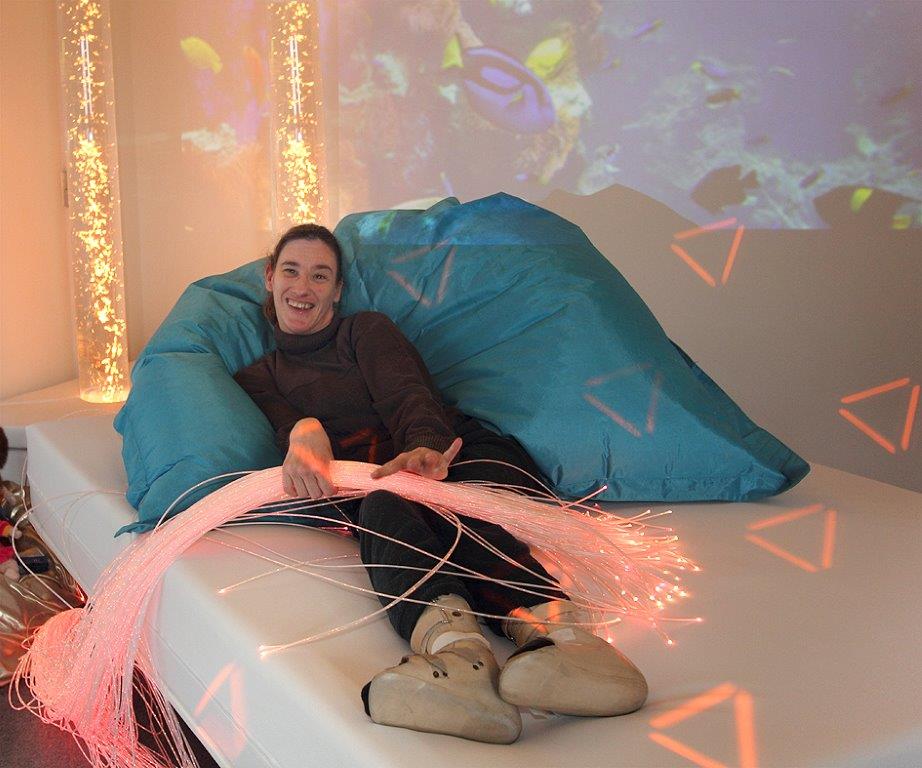.jpg)
TheTherapeutic Potential of Waterbeds
Are you considering a Waterbed but you're wondering about the benefits and if it's right for you?
Well, you've come to the right place, because here at Learning Space we have all the knowledge and advise you'll ever need when it comes to choosing the right Waterbed for your specific needs.
Waterbeds for Children with ASD and Special Needs
In the realm of aiding children with Autism Spectrum Disorder (ASD) and other additional needs, innovative solutions often arise from unexpected sources. One popular solution gaining attention is the use of waterbeds as therapeutic tools. These beds, initially popular in the 1970s, have found a resurgence in popularity due to their unique benefits, especially in the context of children with special needs.
How is that so, you may be asking....
Allow me to explain, you see, children diagnosed with ASD often face challenges related to sensory processing, sleep disturbances, anxiety, and motor coordination difficulties. Additionally, individuals with conditions like ADHD, sensory processing disorder (SPD), or developmental delays may share similar struggles. Addressing these needs requires creative approaches that cater to their sensory preferences and therapeutic requirements.
This is where waterbeds step in - Waterbeds offer a multi-sensory experience that can profoundly benefit children with ASD and other additional needs. The gentle, rocking and fluid motion of the water provides sensory stimulation, promoting relaxation, and for many, alleviating anxiety. The sensation of floating on water can be deeply calming, helping to regulate emotions and reduce sensory overload. (If you've ever laid out on a lilo in the pool whilst on holiday, then you'll understand what I mean by this 'motion' feeling being deeply calming)
Moreover, waterbeds provide a supportive surface that conforms to the body's contours, offering comfort and promoting better sleep quality. Studies have found that children with motor coordination difficulties, the stable yet yielding surface of a waterbed can facilitate movement and improve balance. (Although, you don't get this level of comfort and stability from a lilo in the pool, as I'm sure you can agree!)
Still not sold on the idea? Keep reading...
Scientific Support: Research on Waterbed Therapy
We found that several studies have explored the therapeutic effects of waterbeds on individuals with ASD and related conditions:
1. A study published in the Journal of Autism and Developmental Disorders (JADD) found that children with ASD who slept on waterbeds experienced significant improvements in sleep quality and duration. The soothing motion of the water helped them fall asleep faster and stay asleep longer, reducing nighttime disturbances.
2. Research conducted at the University of California, Los Angeles (UCLA) demonstrated that vibroacoustic stimulation, a feature available in some waterbeds, has beneficial effects on sensory processing and attention in children with ASD. The combination of gentle vibrations and acoustic frequencies provided by the waterbeds helped regulate sensory responses and improve focus.
3. A review published in the Journal of Pediatric Nursing, highlighted the potential of waterbed therapy as a non-pharmacological intervention for managing anxiety and promoting relaxation in children with developmental disabilities. The study emphasized the importance of individualized approaches and tailored sensory interventions, with waterbeds emerging as a promising option.
Still unsure? How about added features?
In addition to the many benefits of waterbeds, certain features like vibroacoustic stimulation and massage add-ons offer further therapeutic advantages:
1. Vibroacoustic Stimulation: This feature involves the integration of low-frequency vibrations and sound waves into the waterbed's design. Research suggests that vibroacoustic therapy can modulate sensory processing, enhance relaxation, and improve attention and social interaction skills in children with ASD. By combining the benefits of gentle motion with auditory stimulation, vibroacoustic waterbeds offer a holistic sensory experience that caters to individual needs.
2. Massage Add-Ons: Some waterbeds come equipped with built-in massage functionality, allowing for targeted pressure and vibration therapy. The rhythmic movements generated by the massage feature promote muscle relaxation, improve circulation, and reduce tension. For children with sensory sensitivities or motor difficulties, gentle massage therapy can provide much-needed comfort and sensory input, facilitating relaxation and enhancing overall well-being..jpg) Click here or image to view our waterbeds
Click here or image to view our waterbeds
So with all this said, what is the conclusion, I hear you ask?
Incorporating Waterbed Therapy into daily life by integrating it into your daily routine can yield significant benefits for children with ASD and special needs. Whether used as a sleep aid, relaxation tool, or sensory modulation strategy, waterbeds offer a versatile and customizable solution that caters to individual preferences and therapeutic goals.
In the quest to support children with ASD and additional needs, embracing innovative approaches is essential. Waterbed therapy, with its unique blend of sensory stimulation, comfort, and therapeutic potential, exemplifies the power of thinking outside the box. By harnessing the calming properties of water and incorporating features like vibroacoustic stimulation and massage therapy, waterbeds provide a therapeutic oasis where children can find relaxation, comfort, and rejuvenation.
As research continues to explore the benefits of waterbed therapy and its various applications, the potential for enhancing the lives of children with ASD and special needs remains promising. By recognizing the importance of individualized care and holistic approaches to wellness, we can create environments that nurture growth and resilience for all children, regardless of their abilities or challenges.
Here's to a restful night sleep,
Lorraine xx
If you'd like additional information on any of our products, please do not hesitate to get in touch with us.




.jpg)
.jpg)
.jpg)



.jpg)
.jpg)

.jpg)
.jpg)
.jpg)
.jpg)
.jpg)
.jpg)